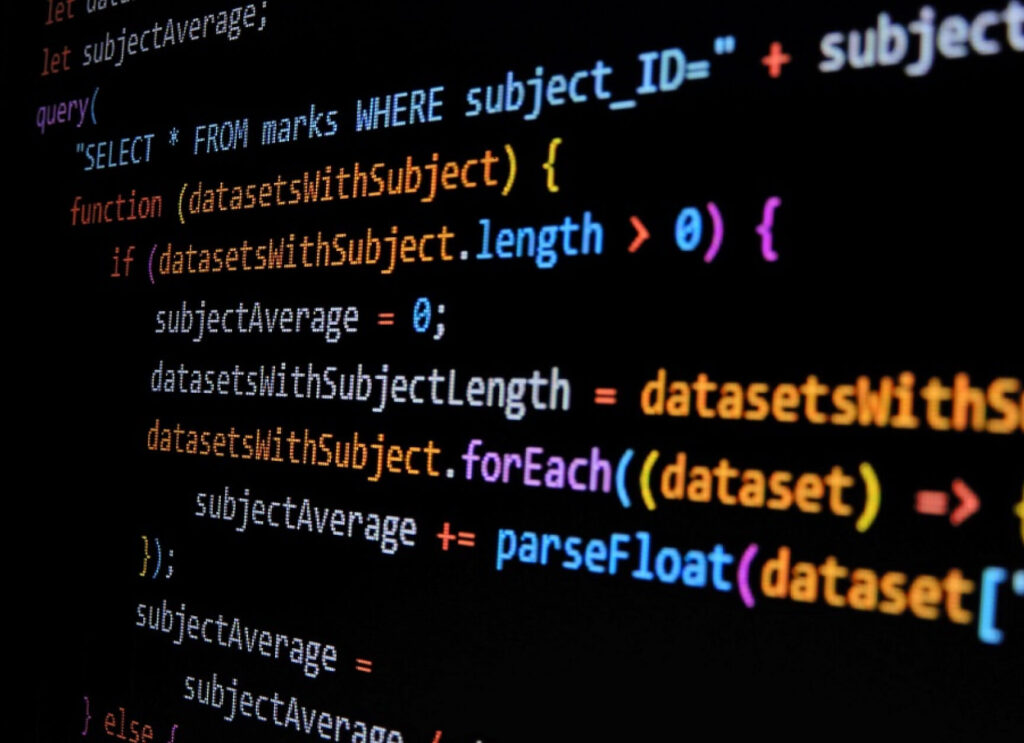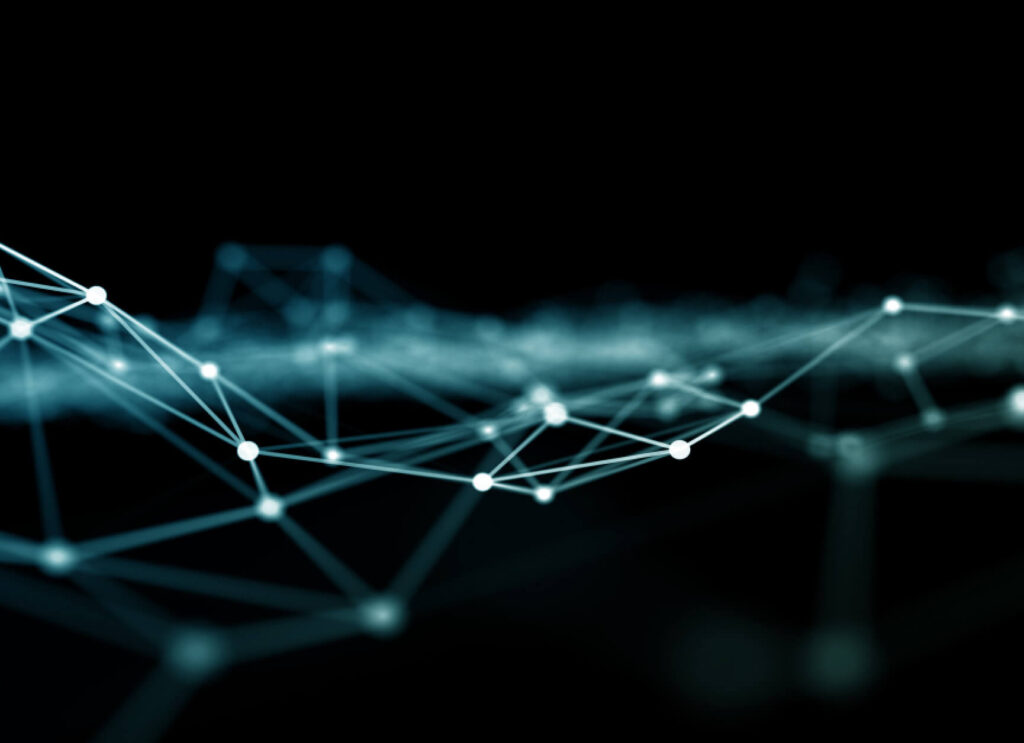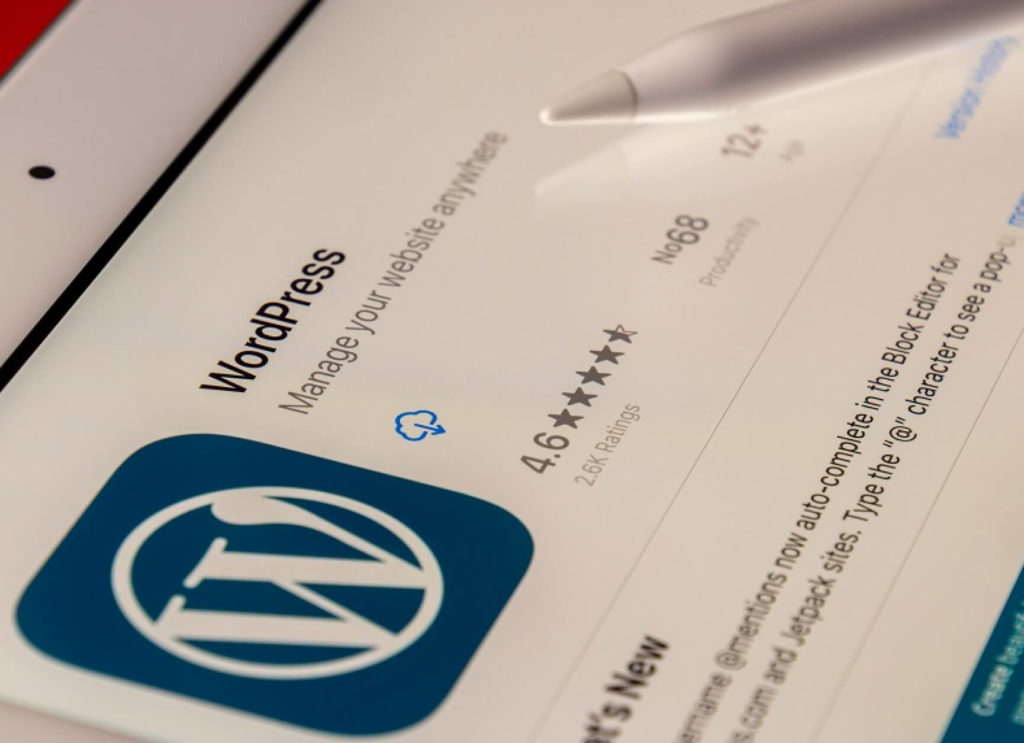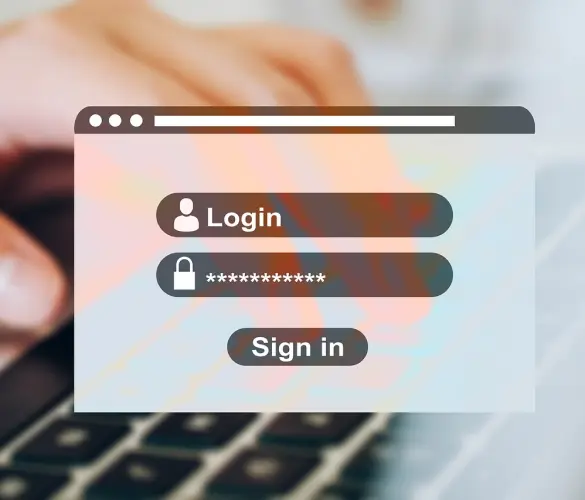How to become a full stack WordPress developer?

WordPress is the most popular CMS in the world, with millions of new websites created every year. Despite its reputation for being beginner-friendly for those with no coding skills, the platform ultimately comes down to code, so learning to introduce and modify code in your WordPress site is the best way to get the most out of it.
But to understand and manage code in WordPress, you need to learn multiple programming languages that intertwine and interact with each other to make websites possible. In other words, you need to become a full-stack web developer.
This article explores what full-stack WordPress developers are, what they do, and the skills you need to become one.
Key takeaways
- Full stack WordPress developers contribute to front and backend web development.
- You need to learn HTML, CSS, JavaScript, and PHP to become a full stack WordPress developer.
- To be a well-rounded full stack WordPress developer, you’ll also need to know how to manage MySQL databases, application programming interfaces (APIs), version control software, and the WordPress CMS platform itself.
- It takes at least six months to gain the skills you need to be a full stack WordPress developer, and around two years to become a pro.
What is a full-stack WordPress developer?

In general, a full-stack developer is a software developer that contributes to both front and backend development.
Frontend development focuses on the user-facing interfaces of the website with HTML, CSS, and JavaScript. They ensure visitors can navigate the site as easily and intuitively as possible.
Backend development refers to the behind-the-scenes structure of the website, the parts of the website that face the server and the database. In WordPress, PHP is the essential backend language to know. Java, Ruby, and Python are commonly used as backend languages in other platforms.
A full-stack WordPress developer should be proficient in four main languages: HTML, CSS, JavaScript, and PHP. They should also know about database management, which means being proficient in a MySQL-like language.
What do full-stack WordPress developers do?
Full-stack WordPress developers have various responsibilities, including:
- Building, maintaining, redesigning, and migrating WordPress websites.
- Building sitemaps or wireframes for WordPress websites.
- Designing and developing new features and functions for WordPress websites.
- In some cases, developing WordPress plugins. They can be plugins intended for public downloads from the WordPress plugin directory or custom plugins that fulfill specific purposes during development and are discarded later.
- Converting client business needs and preferences into website features.
- Testing and debugging code written by other developers.
- Being aware of help desk tickets for broken web pages, hacks, and other issues.
- Configuring regular automated backups.
- Safely installing the necessary plugins and themes websites need.
- Safely updating plugins, themes, PHP versions, and WordPress versions.
What skills do you need to become a full-stack WordPress developer?
Frontend
WordPress frontend developers primarily use HTML, CSS, and JavaScript.
HyperText Markup Language (HTML)

HTML (HyperText Markup Language) is the most popular markup language in the world. It is the code that structures a webpage and its contents, including text, images, video, audio, and any other format of multimedia content.
HTML acts as the building block of the pages visitors use. It allows web developers to structure them by giving browsers instructions about how pages should display each type of content.
WordPress developers can add HTML blocks into a post or page with the text editor or edit each media type directly as HTML.
Cascading Style Sheets (CSS)

Cascading Style Sheets (CSS) is a “style sheet language” and the most popular web language, along with HTML. In fact, HTML and CSS are tightly intertwined because developers use CSS to style HTML elements. You can imagine HTML as the bare concrete and metal structure of a building, and CSS is equivalent to the siding, paint, and all other styling, sealing, and insulating materials.
The following are some of the most common uses for CSS:
- Adding colors to the text.
- Choosing fonts.
- Changing the size of the text.
- Manipulating the spacing between elements.
- Changing background images and colors.
- Making a web page more responsive by modifying how it displays on different devices with different screen sizes.
Developers may also use CSS to style other markup languages, like XML.
JavaScript (JS)

JS is the most popular programming language worldwide and developers use it to make websites and web pages more interactive. It comprises the bulk of WordPress’s frontend development along with CSS and HTML. With JS, WordPress developers can make websites more dynamic by adding interactive features like:
- Content updates.
- Interactive maps.
- 2D/3D animated graphics.
- Popup boxes.
- Interactive multimedia files like playlists.
Any time a web page is doing more than displaying static text, there’s a good chance JS powers the additional elements.
To accomplish this dynamism, WordPress developers use various libraries and frameworks that are based on or incorporate JS to code frontend software more efficiently. Some of the most popular include jQuery, React, BackBone.js, and Bricklayer.
Additionally, headless WordPress developers use various JS-based frontend libraries and frameworks to create the user-facing part of the site, while WordPress handles the backend.
Backend
The WordPress backend is mostly PHP, but developers also need to know how to manage version control software, APIs, databases, and WordPress as a CMS.
Hypertext Processor (PHP)

PHP is the most popular backend scripting language in the world and the one WordPress uses to connect the user interface with the database part of the website. Essentially, PHP is the code that makes WordPress work since most actions your website performs requires a PHP file that runs on the website’s server.
PHP allows websites to get specific information from the database and use it to piece together HTML pages.
When someone visits your site and enters a specific page, like a blog post, they request information from your server. When that happens, the server runs PHP code to create an HTML web page and return it to the visitor. Finally, the visitor’s browser receives the HTML code and displays the content of that specific page.
While in the past years WordPress has steadily moved towards performing more tasks with JavaScript when viable to provide smoother developer experiences, the WordPress core will remain written in PHP for the foreseeable future.
PHP is also essential for developing plugins.
Database management

In general terms, a database is a collection of structured data. In WordPress and other content management systems, the database collects data associated with posts, pages, categories and tags, user data, comments, site settings, plugins, and themes.
WordPress developers have access to this database. They can manage and protect its contents using the database management system MySQL.
Application Programming Interfaces (APIs)

APIs are software interfaces that allow two applications to share data. APIs allow communication between programs not designed to communicate with each other, such as a WordPress website with a PHP foundation and any other application written in any other language.
Knowing how to use APIs allows developers to pull information from external applications and manage WordPress’ own REST API.
Version control systems

Version control systems allow developers to create and manage multiple versions of a website’s code. These systems can take snapshots of a website’s files to essentially create a copy of its entire codebase and store it so developers can later restore it or modify it according to their needs.
Without them, developers would have to keep local copies of their website’s codebase, which makes it easier to make mistakes, get versions mixed up, and lose progress. In short, mastering version control is one of the skills that differentiates professional WordPress and plugin developers (and developers of any kind) from everyone else.
Git and SVN are the most popular version control systems.
WordPress CMS

Once you have enough coding knowledge to get started with WordPress, you also need to know how to use the platform. Considering that by this point, you will know the major languages that power WordPress, learning to use it as a full stack developer is a matter of putting all this knowledge together.
Luckily, WordPress is designed to be easy to use, even for non-developers who just want to blog. That said, you’ll still need to understand how the platform works, how to set it up, etc. Here are WordPress.org’s recommendations on getting started mixed with our experience as developers:
- Read about blogging, WordPress features and terminology, and the requirements for installing WordPress. This step takes time but will build the foundation for long-term success.
- Learn to install WordPress.
- Learn to navigate the dashboard, post content, create custom posts, manage taxonomies, and install plugins and themes.
- Learn how to create website backups.
- Delve into website security, at least enough to protect your site from common vulnerabilities.
- Improve your site’s search engine optimization (SEO).
While there is much more to WordPress than these points, being knowledgeable about them will provide a strong foundation for your web development career.
How long does it take to become a full stack WordPress developer?
Learning WordPress as a full stack developer will likely take you at least six months to over a year of training, and at least two years to achieve professional status. The exact time frame depends on your prior knowledge and available time to study.
How much does a full stack WordPress developer make?
WordPress developers charge hourly rates. These rates vary significantly depending on various factors, like whether they’re freelancers or part of an agency, experience, location, and specific skills.
Most developers’ rates are usually in the $20 to $150 per hour range, but the most common range is $40 to $80 per hour.
Here’s a more detailed breakdown of what you can expect to earn as a WordPress developer in the US.
| Rate per hour (in the US) | Yearly salary (in the US) | |
| Low | $26.38 | $54,870 |
| Average | $37 | $76,960 |
| High | $55.47 | $115,377 |
Keep in mind that location plays a pivotal role in WordPress development salaries. Developers in countries with a high cost of living, like the US, can command more pay. In contrast, developers in countries with a lower cost of living, like Argentina, tend to be more affordable.
How to gain the skills to become a full stack WordPress developer?
Knowing the skills you need to learn to become a full stack WordPress developer is one thing, but it’s entirely another to actually develop those skills.
Luckily, there are many resources for learning WordPress and its related programming languages, with most of them being completely free! In fact, there are so many it can be overwhelming and hard to choose one in particular.
Let’s break down some of the resources our developers used in their journey. It may give you an idea of where to start.
Online courses
Online courses have become the bread and butter of many web developers. They’re highly accessible because you can learn from anywhere in the world, provide the flexibility to learn at your own pace, and often include interactive elements like quizzes and playgrounds to let you code and test inside the platform.
Some of our developers used Udemy to learn code. It has around 1,500 free web development courses and nearly 9,000 paid ones. It has courses on every skill you need to become a full stack WordPress developer, from HTML and CSS to PHP and version control.
Other popular online education resources for developers include CareerFoundry, App Academy, Codecademy, Coursera, and edX. Some courses even give you a certificate when you complete them!
While you don’t need to go through any paid course in particular, it may be worth it to invest in high-quality educational programs designed to help you learn from the ground up.
WordPress and programming language documentation
Whether you’ve been using WordPress for two weeks or ten years, the official documentation will always be your friend. It covers a wide range of topics, from frequently asked questions for beginners to advanced resources.
And if you ever come across a situation not covered in the documentation, you can always use the official forums to ask other developers for help. The WordPress community is highly collaborative, so you can always count on others to provide at least some advice and guidance.
Additionally, you should keep the documentation for specific programming languages handy as you progress in your journey. Sometimes, the organizations behind programming languages provide official documentation. In other cases, official documentation is unavailable, but you can always use Mozilla Development Network’s (MDN) excellent developer resources. It provides extensive documentation for many languages.
Bookmark these links as you learn more about each language or tool:
- MDN’s HTML documentation.
- MDN’s CSS documentation.
- MDN’s JavaScript documentation.
- PHP documentation.
- Git documentation.
- MySQL documentation.
- WordPress-specific documentation:
Keep in mind that documentation is the most useful as a supplement to online courses and your own projects. Simply going through the documentation from start to finish is unlikely to teach you how to apply the principles in practice and in the context of other tools, but it’s invaluable as a resource to support a structured learning program.
Other web developers
Connecting with other web developers is one of the best ways to stay informed and on track with your learning. When you study independently as a beginner, knowing whether you’re using the correct methods for your project or whether your learning approach is efficient can be challenging.
Getting feedback from experienced developers (through forums or in person) will give you insights into modern methodologies, help you identify and correct bugs, and may even help you network for potential employment opportunities.
This is even more true if you land a WordPress developer job. Learning from your experienced peers will make you a better developer in every possible way.
YouTube tutorials
While you shouldn’t rely entirely on YouTube tutorials for your learning, many great WordPress-related channels create guides for features and common problems. After all, some people learn best when they watch others perform a task, and YouTube is an excellent platform for that.
Some of the channels you can follow include:
- WPBeginner for tutorials on everything related to WordPress.
- WPTuts for more tutorials and WordPress insights.
- Let’s Build WordPress for tutorials aimed at beginners.
- Darrel Wilson for even more tutorials and informative videos.
- WPEngine if you use their hosting services or some of their other products.
- Yoast for SEO-related content from the people behind the most popular SEO plugin.
It may sound silly or unprofessional, but learning how to Google solutions for your bugs is an essential skill every developer needs. Especially when you’re in the early stages of learning WordPress, knowing what is wrong with your code and how to fix it can be challenging.
When those times come, and you’re all out of ideas, googling for solutions is a perfectly acceptable resource. However, the key to googling “properly” is using the correct phrasing to describe your problem as specifically as possible. This way, the search engine is more likely to provide relevant results that help you move forward.
Try the following strategies when googling solutions for your coding problems.
Start with broad search queries
Start your search with broad search terms that aren’t specific to your problem. Sometimes they can be very broad, like “PHP [general topic for your project]”. The results may lead you to articles and documentation that provide context for the tools and commands you’re using.
Sometimes, reading the documentation for a command is enough to clarify how to use it.
Use the search results to refine your search queries
As you read through the results, try to recognize which terms may or may not be relevant to your problem and adjust your queries accordingly.
For example, if you notice a specific keyword is relevant to your problem, you can narrow your search by using quotation marks (“”). Results will contain only the pages that contain the terms inside the quotation marks. Consider this query:
"JavaScript loop" doesn't workEvery result from this Google search will contain “JavaScript loop”, helping you narrow your search to relevant results. Learn about other Google operators to make your searches more specific.
Copy and paste the error message you receive
When you run a bugged program, you often receive helpful feedback from your code editor. If you’re coding in JavaScript, you may get something like Invalid array length. Copying this error message and pasting it into Google may lead to documentation or forum threads about it. It may help you determine what caused it and how to fix it.
General tips to become a full stack WordPress developer
In this final section, we’ll provide some general recommendations you should keep in mind as you progress in your journey to become a full stack WordPress developer:
- Take your time with HTML, CSS, JavaScript, and PHP. Any time you spend mastering the languages that will help you create performant and responsive pages is time well spent.
- Explore the WordPress core. Familiarizing yourself with WordPress’s structure and codebase will help you understand why your code works or doesn’t work.
- Study the structure of themes. Explore template files, functions.php, style.css, and every other WordPress component that helps you create themes and customize existing ones to suit your project’s needs.
- Delve into plugins. Plugins extend WordPress’s capabilities. Learning how they work and how to create your own plugins to solve specific needs are invaluable skills.
- Understand the WordPress database. The database stores content, settings, user data, and much more. Learn MySQL to manage it and make it work more efficiently using PHPMyAdmin or similar tools.
- Learn about common security vulnerabilities and the best practices for preventing them.
- Learn to set up local WordPress servers to edit code offline without the risk of breaking your live website.
Conclusion
Ultimately, you need to know four languages to become a WordPress full-stack developer:
- HTML for web page structure.
- CSS for HTML styling.
- JavaScript for making websites interactive.
- PHP to manage the WordPress backend.
In addition to these languages, database management, version control systems, APIs, and knowledge about WordPress as a platform will also be essential in your journey.
It can seem overwhelming at first, but the tried and true path to becoming a WordPress developer is to learn HTML and CSS, followed by JavaScript, and finally, start learning PHP. With that foundation, you have what you need to create a WordPress website.
As you get more familiar with the WordPress environment, other skills will be necessary as they become relevant. It’s a slow, gradual process, so remind yourself that with each step you take and every new skill you learn, it will become easier to learn even more!
If you found this article helpful, read our blog for more WordPress insights and guides.
Related Articles

How to... / 5 min read
How to... / 5 min read
How to Make a Subscriber Into an Admin on WordPress?
While it's not the most common situation, at some point, you may find yourself needing to make a Subscriber into an Admin on your WordPress site. Maybe you need to…
Read More
How to... / 3 min read
How to... / 3 min read
How to Grant Secure Access to a Not Live WordPress Site During Development
When developing a WordPress site, you often need to collaborate with multiple developers and grant access to the website owner so they can review the progress themselves. However, granting access…
Read More
Industry Insights / 11 min read
Industry Insights / 11 min read
Do You Need a Web Developer to Build a WordPress Site?
If you’re building a WordPress site or considering building one, you wonder whether you need a web developer to create it or you can do it yourself. The answer can…
Read More
How to... / 6 min read
How to... / 6 min read
How to Change the Bottom Padding Dimensions on WordPress Blocks
If you're learning to modify your WordPress site's layouts and design, you may be wondering how to change the bottom padding dimensions of some of its elements. If that's the…
Read More
How to... / 10 min read
How to... / 10 min read
How to Disable the “Similar Posts” Section in WordPress Blogs
If you’re diving deeper into customizing your site, you may be wondering how to disable the “Similar Posts” section that appears on the bottom, sidebar, or footer of your WordPress…
Read More